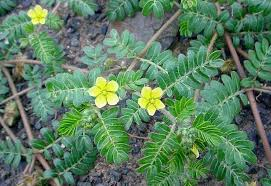Dodder: To Kill or Not to Kill

Southwest Yard & Garden | September 23, 2017 Question: What are the beautiful golden strands that show up from nowhere, and seem to attack the goatheads? Can they be moved from one patch to another where it is not growing yet? B. Stanley, Chaparral, NM Dodder strands on puncturevine (credit: Dr. Beck) Dodder forming mats on weedy roadside (credit: J. French, NMSU Extension Plant Pathology Specialist) Answer: In order to fully address your question, I have consulted with NMSU Weed Specialist, Dr. Leslie Beck. Those golden strands are from a climbing parasitic plant commonly known as dodder of the genus Cuscuta . It is a close relative of morningglory and the dreaded field bindweed, which are all in the plant family Convolvulaceae. You may have seen time-lapse video footage of vine tips making slow, circular, swaying motions as a way of searching for sturdy branch to climb. Dodder grows in a similar way. Dodder germinates from seed in the...



